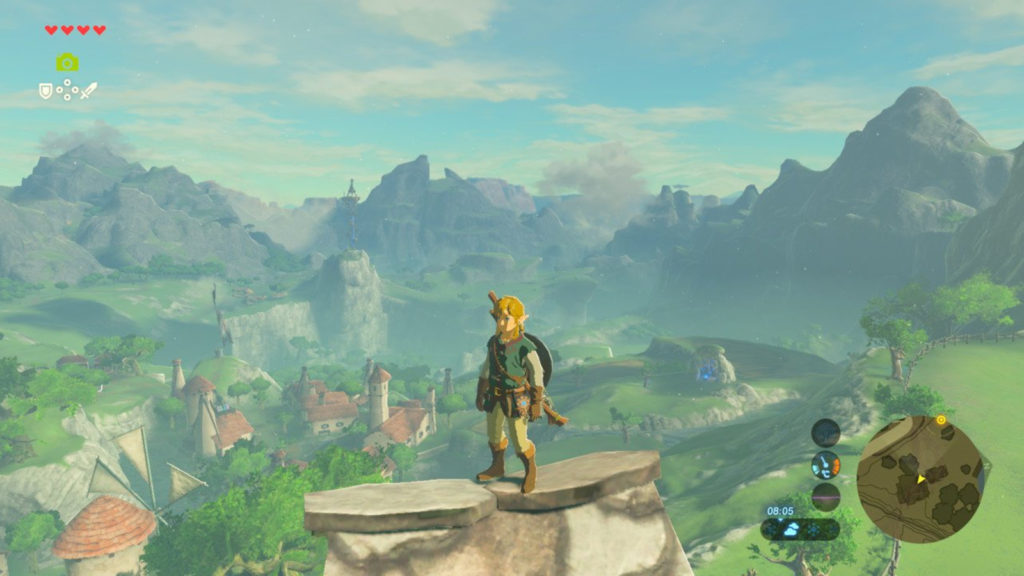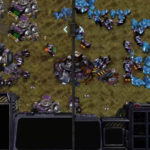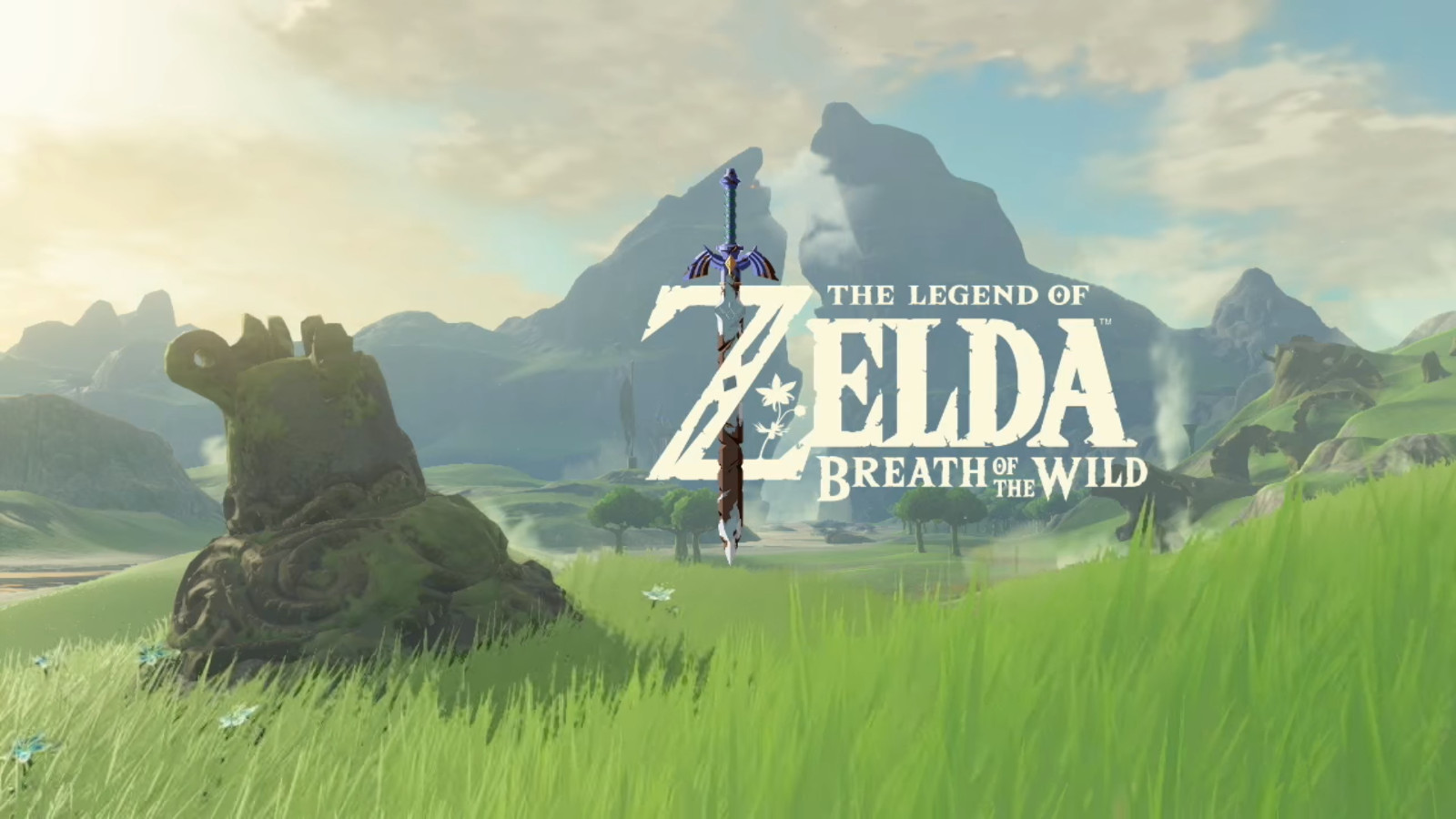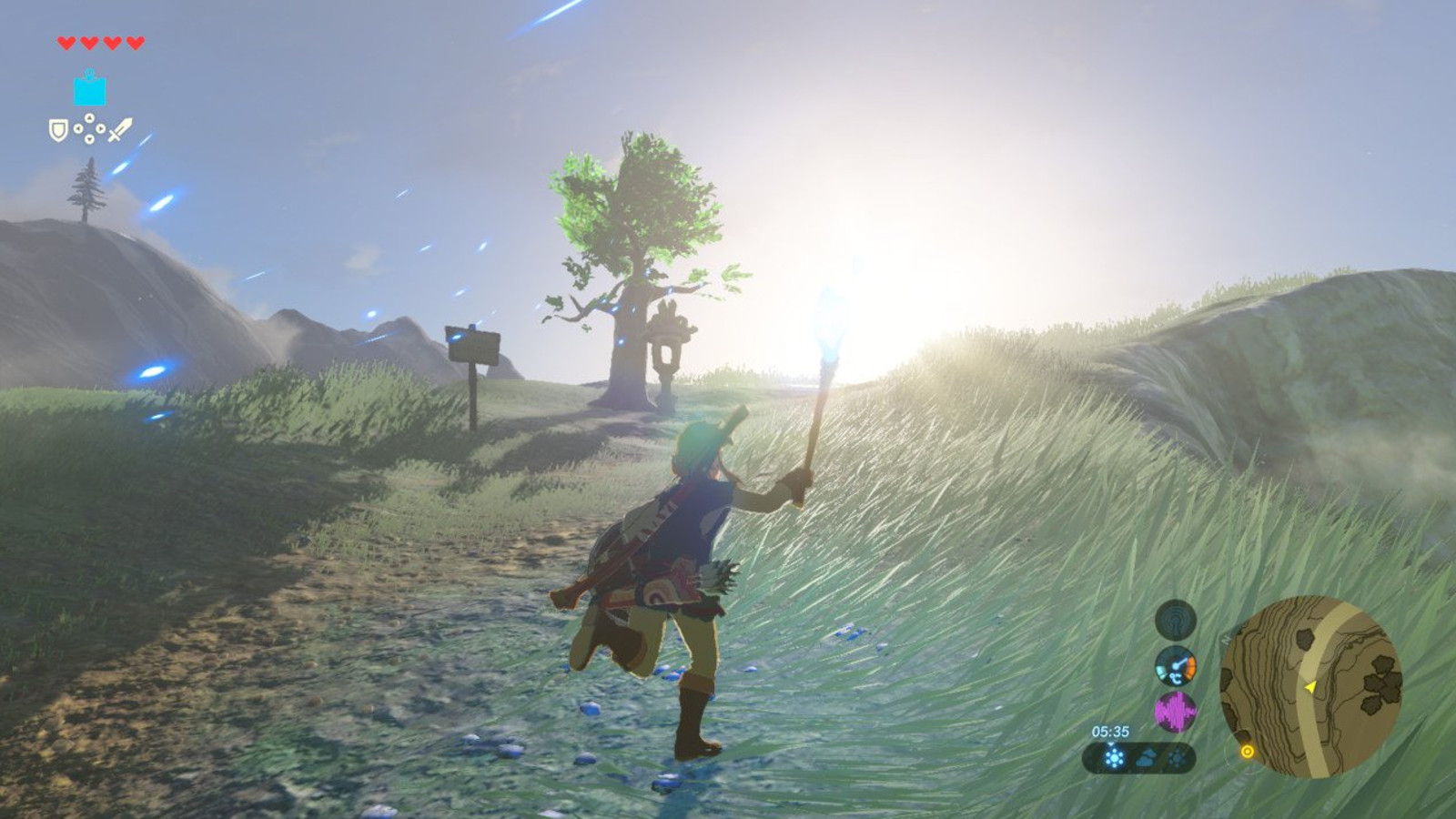MTN launches its biggest Black Friday yet MTN South Africa has kicked off its 2025 Black Friday campaign with a major expansion of deals…
Review diary: The Legend of Zelda: Breath of the Wild [Week Two]

The latest game in The Legend of Zelda series makes for a rather interesting, albeit not unprecedented, situation. During its development, Nintendo decided that the Wii U title should come to the Nintendo Switch as well.
It’s not the first time that we’ve seen Nintendo make this decision for a Zelda game, with 2006’s Twilight Princess launching on both GameCube and Wii. But Breath of the Wild is far more ambitious than Twilight Princess, owing to its wide-open world, free-form exploration and the constraints of Nintendo’s new console.
Week one – it’s influenced by a lot of franchises
I managed to spend between 10 and 12 hours with Breath of the Wild in the first week, and the first thing that struck me about the game was how much (and how sensibly) it borrowed from franchises such as Assassin’s Creed and The Elder Scrolls series in particular. Now, some might argue (and rightfully so, to an extent) that these titles merely copied from the original Zelda, but it’s not that simple.
There’s an introductory view in the opening that brings to mind Oblivion‘s generation-defining step into the world, showcasing those “mountains in the distance” and other landmarks. Much like Assassin’s Creed games, you can indeed climb those landmarks and mountains, but the title uses a stamina wheel to keep you in check. It makes for a rather fun mechanic, especially thanks to the last ditch button, allowing you to expend a significant amount of stamina in exchange for a massive leap.
In fact, climb certain structures in the game and you’re awarded with Korok seeds (used for inventory upgrades) and a view of the landscape, evoking memories of Ubisoft’s Templar-killing franchise.
Again, like Skyrim (and admittedly many games on the market), we’ve got an open world for us to explore, being divided into numerous regions. And it instills the same sense of wonder, as you encounter enemy encampments, friendly dwellings, interesting characters and more. Your journey might see you set off on a main quest, only to take on one of the many shrine challenges in the game, try to climb a particularly tall tower or go off the beaten path in general.
Breath of the Wild clearly borrows features from other titles but, for the most part, it’s done well
Climbing aside, perhaps the biggest difference between Skyrim and Breath of the Wild is the actual approach to the open world and story. In the former, you’ve got a compass that shows points of interest/type of POI, while in-game texts are a big story driver. In the latter, you’ll need to discover these areas yourselfor mark them via your binoculars, rather than having an in-game tool point it out to you (at first). Additionally, the in-game texts are few and far between thus far, so you’ll need to find various “memories” and speak to characters to get a better picture.
The difference isn’t necessarily a good or a bad thing, but what Skyrim loses out in surprising points of interest, it seems to gain in having its environments tell a story. Whether you encounter a skeleton in a compromising position or a diary detailing an NPC’s last days, Bethesda’s title definitely does a great job in this department.
Breath of the Wild also builds upon Skyrim‘s cooking mechanic, with the key difference being that discovery of new recipes is completely up to you. It makes for a fun experience when you’re rewarded with a super effective dish. But Zelda doesn’t punish you if you mess up your recipe either. “Here’s a disgusting dish that will still heal you a little,” seems to be the game’s refrain after a spot of cooking gone wrong.
It’s got a lot of Far Cry trappings
Then there’s the Far Cry influence, with the towers in each region of the map. And much like Far Cry 3 and later games, you’ll need to scale these increasingly difficult towers in order to uncover a map of said region and spot landmarks. Ordinarily this would be a boring endeavour, but the stamina wheel means that, again, there’s always a sense of urgency to these climbs that Far Cry and Assassin’s Creed never quite had. But you can always upgrade your stamina wheel if you find yourself falling ever so short, completing the numerous shrines to earn upgrade items.
Heck, weapon degradation is another feature seen in other games (perhaps most infamously in Far Cry 2), as Link is forced to scavenge for weapons. It makes for an interesting gameplay choice, which means your powerful weapon won’t last forever, injecting a layer of strategy into proceedings. And unlike Far Cry 2, the weapons tend to break at predictable points and there are noticeable visual cues (in menus and weapon selection screens, for one), so you won’t generally be surprised.
In saying so, these weapon breaks aren’t necessarily a good thing, as I ended up destroying a ton of weapons in the first dungeon I visited (I had quite a few to begin with), leaving me with one for the boss battle. I died. Even a puny dagger or Link’s fists would’ve been a viable, albeit low-powered option. Instead, hitting the attack button without weapons sees Link pantomime reaching for a sword and finding nothing. Another option would’ve been for those broken weapons to be repaired later at a shop. In saying so, the degrading weapons do encourage weapon experimentation and work well on the whole, but it’s not a perfect system.
Finally, the other feature lifted from Far Cry is the fire propagation system for vegetation. By lighting brush on fire, the blaze can spread, but it’s not nearly as rampant as Far Cry 2 and Far Cry 3‘s implementation. In saying so, the game does let you wreak havoc if there are gusts of wind to fan the flames, while the updraft created by the fire can be used for gliding, in a smart touch. A fair trade-off for the gimped nature of the fires in general.
At this juncture, Breath of the Wild feels like the iPhone in many ways. Sure, X brand may have had this feature before, while Y brand may have had that feature before — but Apple/Nintendo managed to polish and combine those disparate features into a single product.
Week two – is it still a Zelda game though?
The big question then is, given the changes, whether Breath of the Wild is still the Legend of Zelda you know and love… The open world environment is a shock to the system for those coming from recent entries. But, of course, the developers have cited the original title for its open-world inspiration.
These open-world trappings extend to the general moment-to-moment gameplay as well. The game doesn’t really have a guiding hand when it comes to exploration (reminiscent of previous games), save for quest markers and a sensor to detect shrines and the like. One minute, I found myself on the way to attend to a quest. The next, I was off the beaten path, climbing a peak or taking out a bandit camp.
The sense of exploration is enhanced by the aforementioned Koroks you’ll occasionally come across. A staple of Wind Waker, these creatures can be found in a variety of places and situations. You might need to make an offering to a statue, climb a building, dive into a lake, or you simply lift up a solitary boulder at the top of a peak. Dropping said boulder on a Korok’s head never gets old, either.
It’s a smart little way of encouraging exploration, although it would’ve been lovely if the Koroks offered more than inventory upgrades. How about durability upgrades or something? You’ll max out your inventory upgrades long before you find all the Koroks.
As for the combat system? It’s classic Wind Waker, for the most part. So that means you’ll do the usual shoulder button targeting for enemies (release the button and press again to lock onto a separate enemy), with dodges available by jumping sideways, backflips by jumping backwards, and leaps by jumping forward.
There’s also a shield parry move, available by tapping one of the face buttons at the right time, but I seldom get the timing right. Or the timing window is super narrow. Or both.
Otherwise, there’s your standard attack and a strong attack — the latter being activated by holding down the attack button. Although stamina is a consideration, I never really found myself in a vulnerable position because I was out of energy.
It wouldn’t be a Zelda game without dungeons, though, and there are several dungeons in the game thus far. I’ve only encountered and completed Zora’s Domain in my past 20 or so hours of the game thus far. But those expecting the sprawling dungeons of previous games might be disappointed, if this one is anything to go by.
That’s not to say that these dungeons are tiny and unimaginative – far from it. But I get the feeling that those used to the large dungeons, centred on a specific object, will be left wanting a little more.
Fortunately, the 100+ shrines in the game, serving as mini-dungeons of sorts, more than make up for the smaller main dungeons. It’s almost as if the open-world nature of Breath of the Wild allowed Nintendo’s developers to flex their creative muscle, without needing to shoe-horn it into a dungeon or specific section.
You’ll be using your Sheikah Slate’s powers (freezing objects in time, turning water into ice, using magnesis) to solve some head-scratchers of note. So far, I’ve come close to leaving a few dungeons due to the puzzle difficulty, but I often found that I just had to think laterally. And I’ve never had a “seriously?” moment after solving a puzzle.
In any event, my limited time with the main dungeons thus far suggests that it won’t live up to dungeons in previous titles. But the shrines are absolutely Zelda, through and through.
Expect our third update in about a week!





